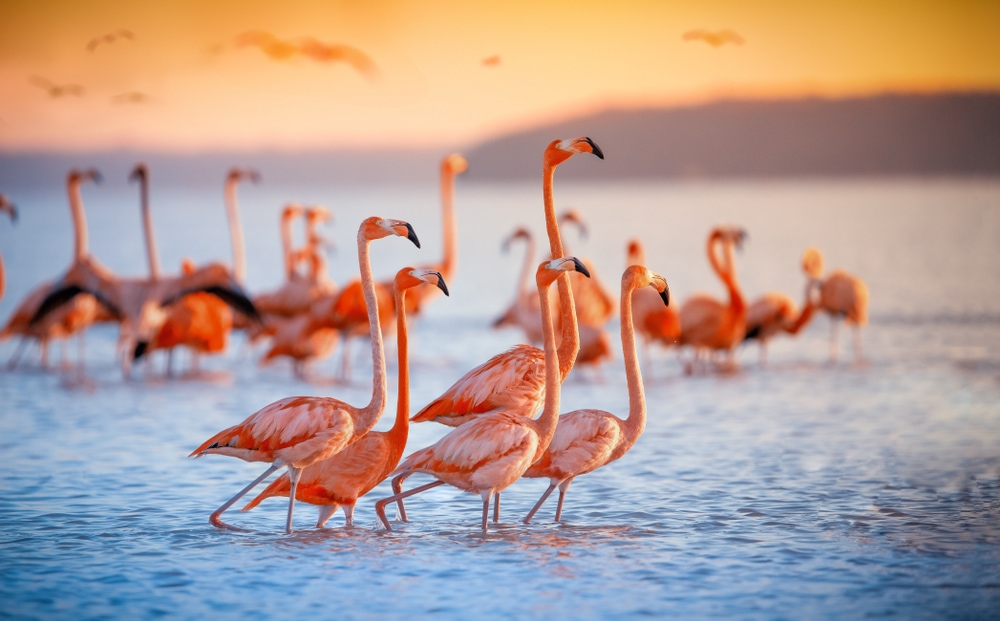
Birds around the world come in all shapes and sizes and are well known to adapt characteristics over time to best suit available food and other resources. Beak shape might be the most well-known adapted characteristic, but what about long necks?
We’ve put together everything you need to know about birds with long necks, including what long necks are made of, what they’re used for, and examples of bird species around the world with extra long necks.
Fun Facts About Birds with Long Necks
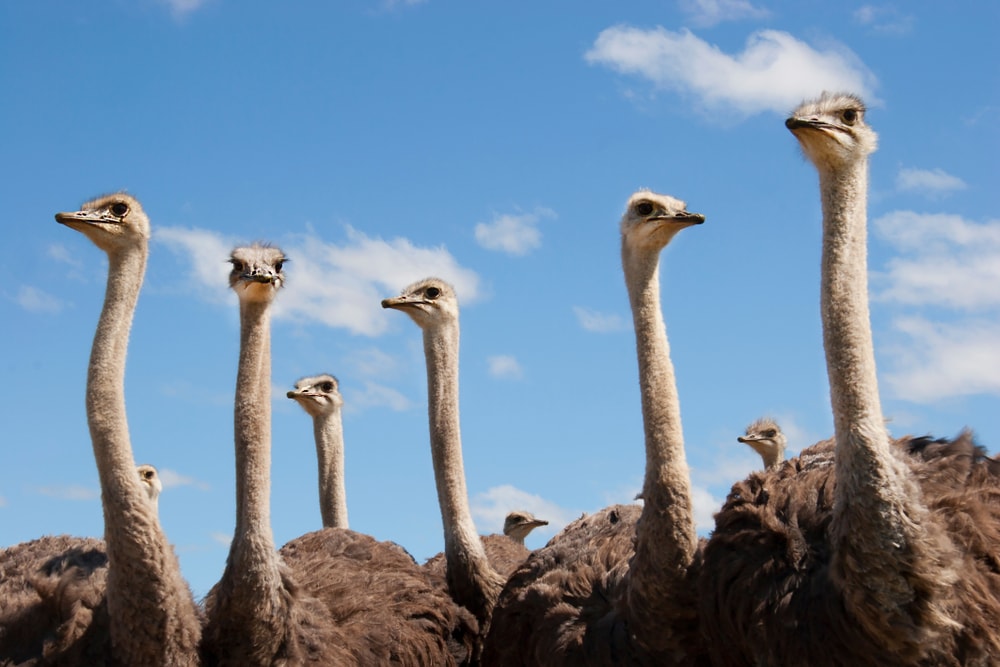
To get you warmed up, here are a few quick facts about the most interesting birds with long necks.
What are Long Necks Made Of?
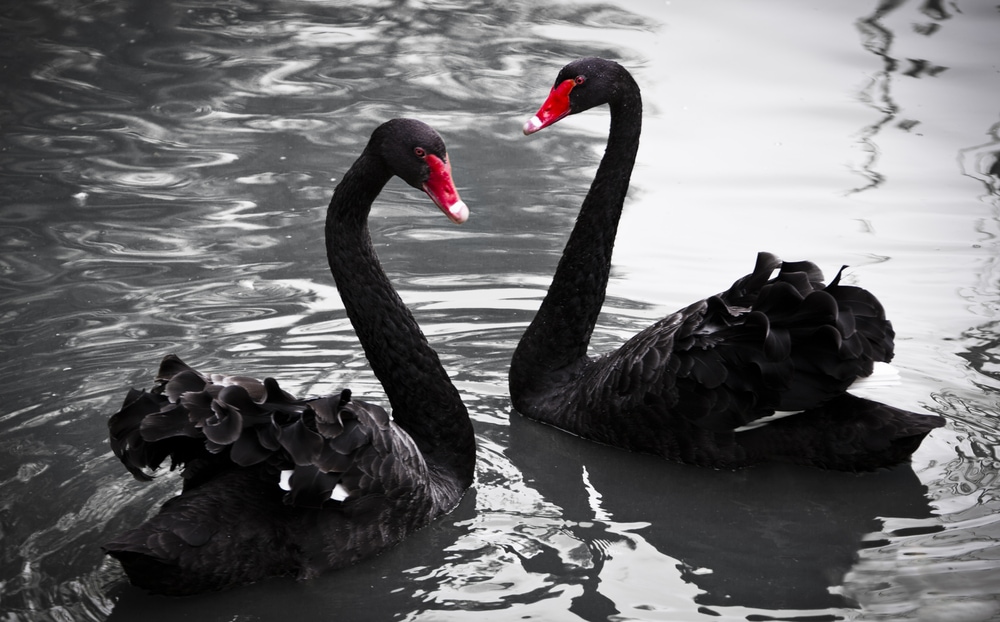
The answer to this question is deceptively simple. While almost all mammals, from mice to people to giraffes, have seven vertebrae in their neck, birds are a little different. In fact, birds have more neck vertebrae than most other animals. Also known as cervical vertebrae, birds can have between thirteen and twenty-five vertebrae in their neck alone.
Simply put, bird species with longer necks have more cervical vertebrae than species with short necks. Birds are also unique because their cervical vertebrae are flexible. This allows birds to have a more flexible, larger reach in their neck to assist with grooming their feathers and quickly catching prey.
The most common purpose of long necks in birds is to allow them to feed more easily. In most cases, birds with long necks also have long legs. Long necks are a typical adaptation for wading birds like cranes, egrets, and herons This combination of a long neck and long legs allows them to walk slowly and carefully through the water before quickly striking and capturing prey.
You may also like: Check out these 22 Different Types of Hawks You Can’t Miss: With Images, Facts, and More!
What is the Evolutionary Path of Birds with Long Necks?
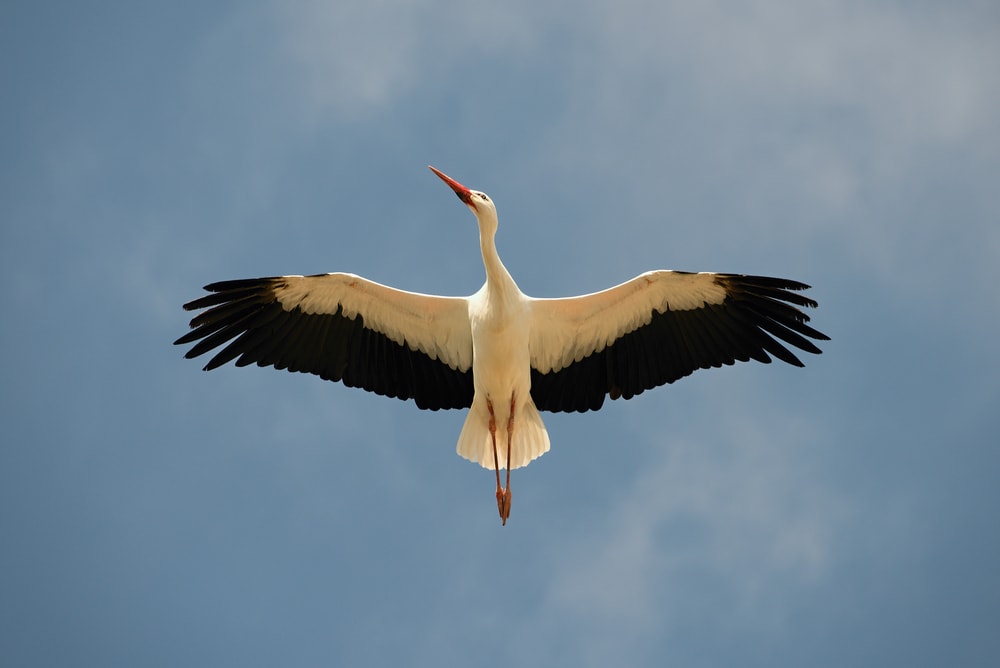
As we know from research that began in the 1990’s, modern-day birds evolved from dinosaurs. Specifically, dinosaurs from the group called Theropods, or dinosaurs that walked on two legs and ate meat. Within the Theropods, dinosaurs evolved from large reptilian carnivores like Tyrannosaurus Rex to smaller, feathered species like Archaeopteryx and Deinonychus that look more like modern birds.
This evolution likely took place to take advantage of food and protection found in forested areas. Archaeopteryx and Deinonychus didn’t have long necks, but they were some of the earliest precursors to birds.
You may also like: Learn More About the 14 Birds You Can See in Pennsylvania: With Images, Facts, and More!
Prehistoric Birds with Long Necks
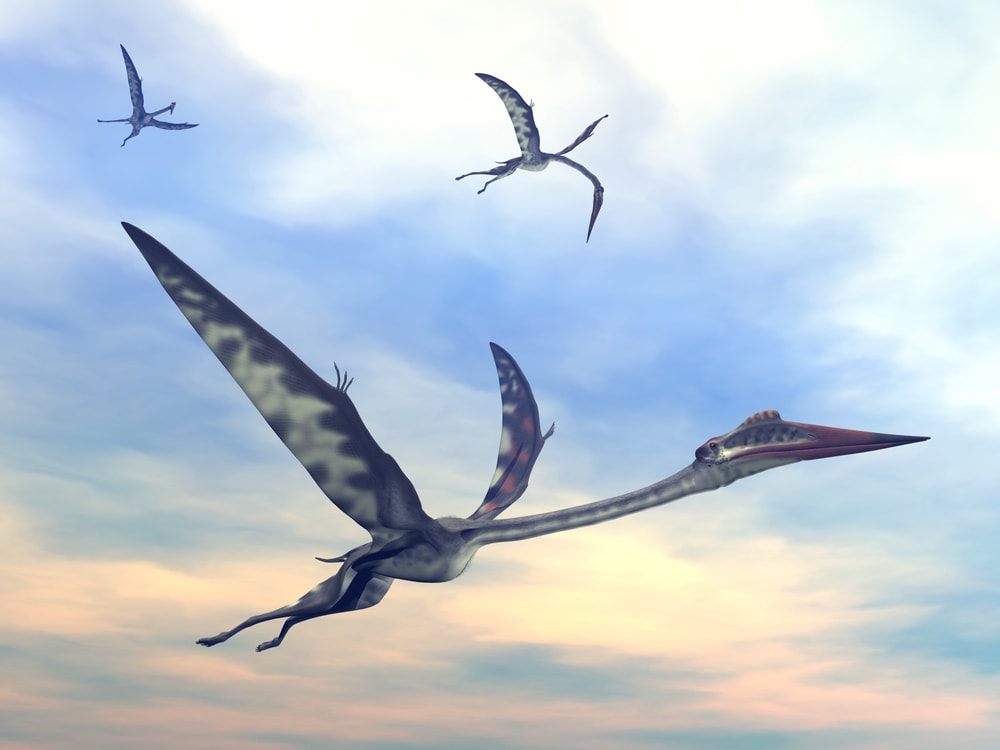
A prime example of a prehistoric bird with a long neck was Quetzalcoatlus. This dinosaur was the largest known flying animal to ever exist with an estimated wingspan of ten to fifteen meters. Found in North America in the Late Cretaceous Period, Quetzalcoatlus was a member of the Azhdarchidae family which are known for having long, stiff necks.
The Azhdarchidae family are considered precursors to modern birds with long necks, with the difference being their cervical vertebrae weren’t flexible like modern birds. Technically, this dinosaur was classified as a flying reptile rather than a bird but can be tracked evolutionarily to modern birds with long necks.
Just like we can trace the evolution of dinosaurs to birds, we can trace how and why some birds developed long necks. Through natural selection, birds with longer necks and longer legs were better able to sneak up on prey in coastal and semi-aquatic environments. These slow adaptations led to the bird species with long necks we know today.
You may also like: Check out the 7 Amazing Species of Owls in Florida: With Images, Facts, Description, and More
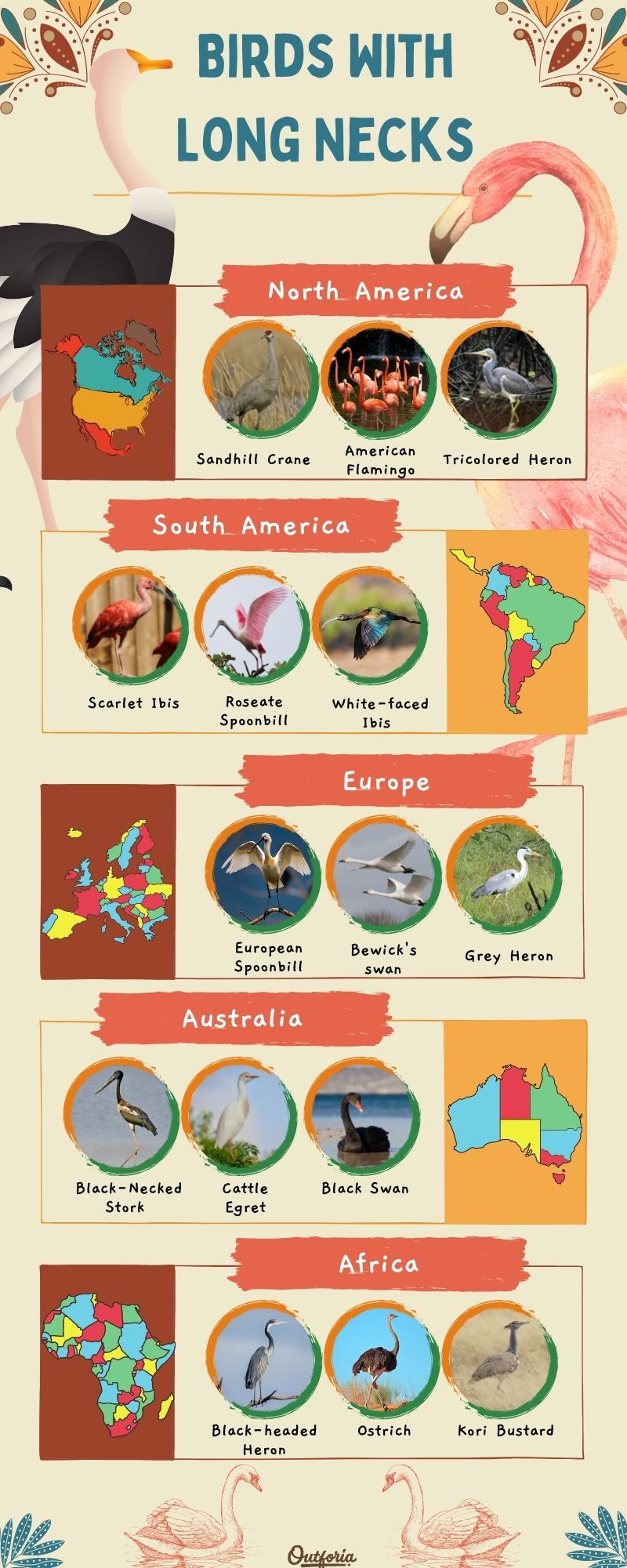
share this image on your site
<a href="https://outforia.com/birds-with-long-necks/"><img style="width:100%;" src="https://outforia.com/wp-content/uploads/2022/03/birds-with-long-necks-infographic-1.jpg"></a><br>birds with long necks <a href="https://outforia.com">Outforia</a>You may also like: Learn the Different Types of Birds and the 40 Popular Bird Species: With Images, Facts, and More!
15 Fantastic Birds with Long Necks From Around the World
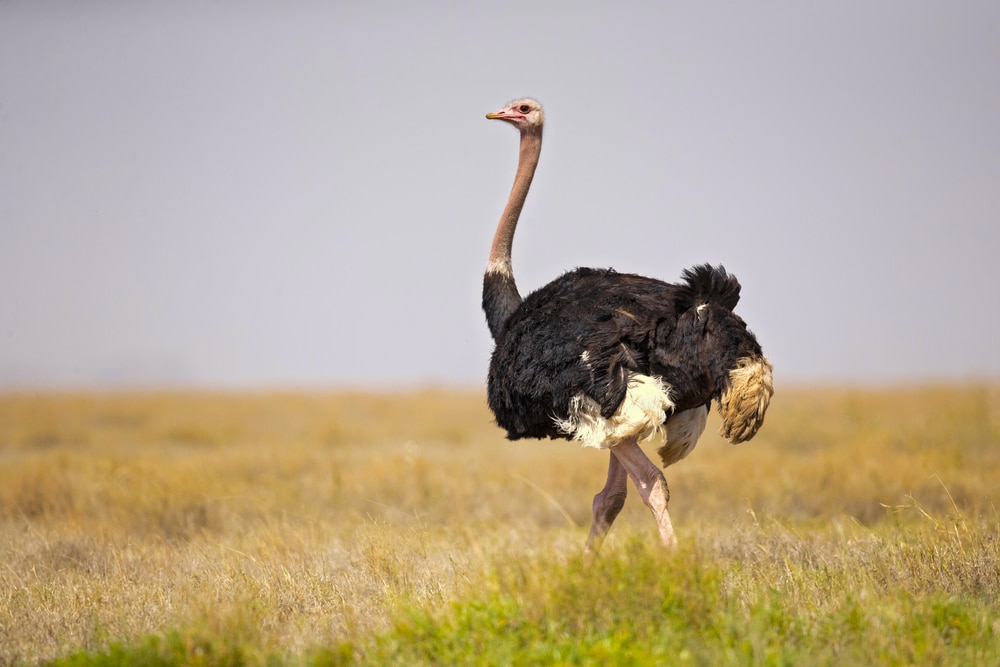
Organized by continent, read on to learn about bird species with long necks. From unique colors, long migrations, and even the largest bird in the world, we’ve put together the fifteen must-know bird species with long necks.
North America
1. Sandhill crane, Antigone canadensis
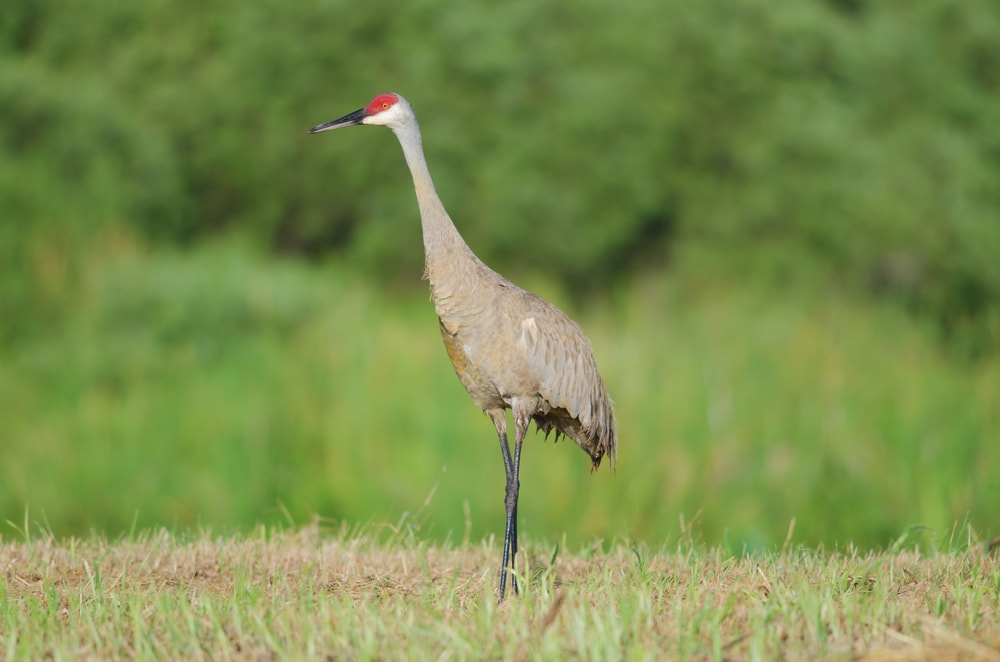
Sandhill cranes are found in open wetlands, fields, and prairies across North America. These cranes breed in Canada during the summer and winter in the southern United States, migrating through the Central Flyway in the Great Planes of the United States during the spring and fall.
Sandhill cranes have a long neck and long legs, with gray bodies and red crowns. Sandhill cranes are easily distinguished from other cranes by their unique call. Their vocal cords coil down to their sternum, allowing sandhill cranes to harmonize with themselves.
Average adults are four feet ( 1.2 m ) tall, weighing up to twelve pounds ( 5.44 kg ) with an average lifespan of twenty years. Like many crane species, sandhill cranes have elaborate mating dances. Pairs mate for life and return to the same nesting site each year.
2. American flamingo, Phoenicopterus ruber
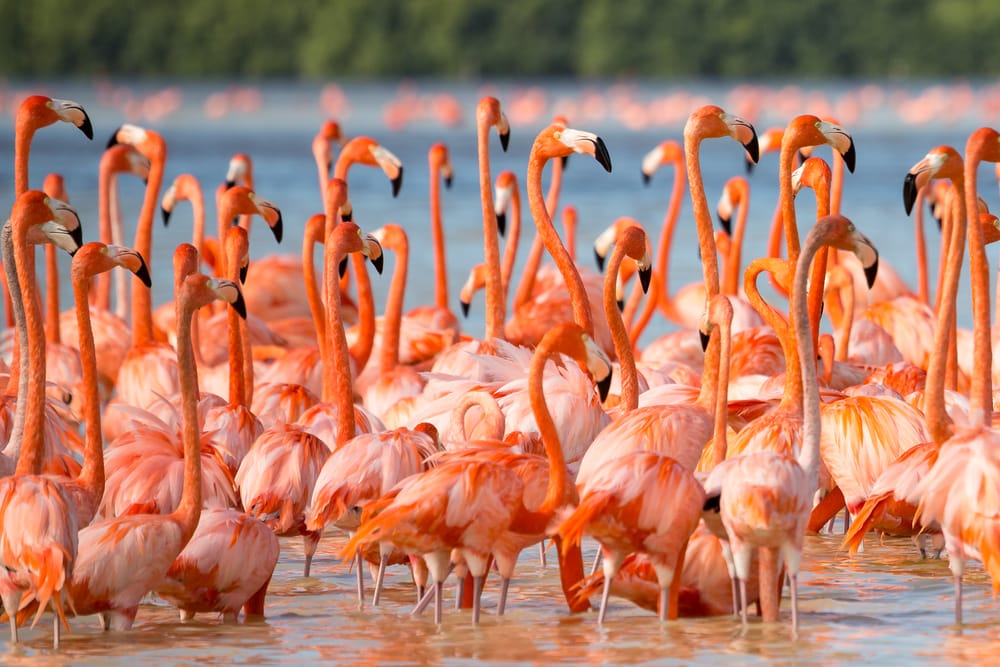
One of the most recognizable bird species with a long neck, the American flamingo is found in Florida and the Caribbean. The average adult is 1.5 meters tall (4-11 ft) and weighs 2-3 kilograms (4-6 lbs)with a lifespan of forty to sixty years.
American flamingos are unique because they don’t have a specific breeding season. Instead, the timing of breeding coincides with high rainfall events to ensure enough food will be available when the chicks hatch. American flamingos eat algae, small seeds, and aquatic invertebrates including shrimp and mollusks, which accounts for their pink coloring.
3. Tricolored Heron, Egretta tricolor
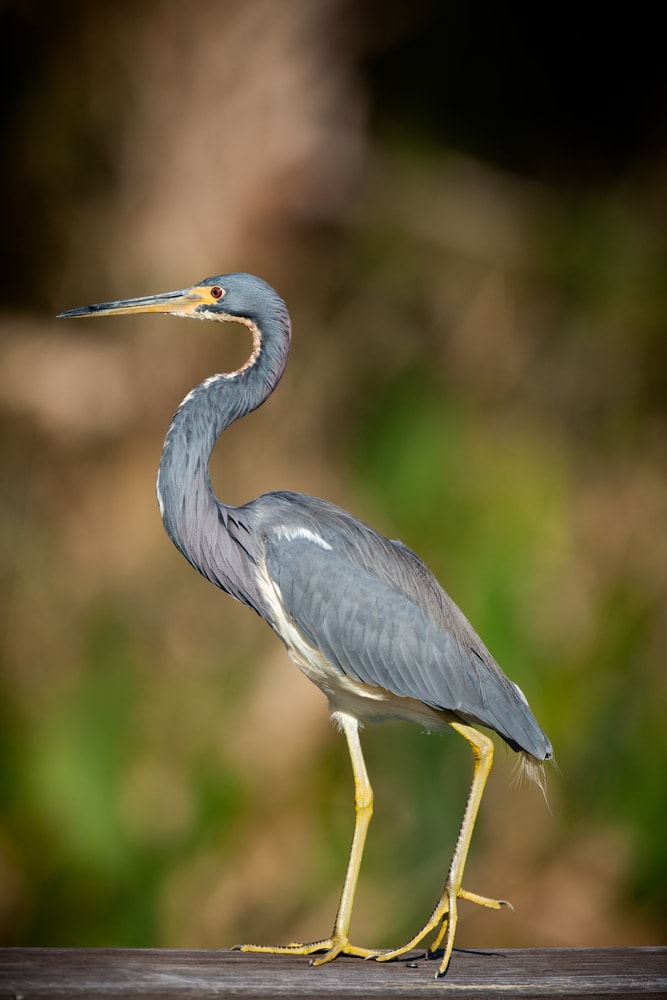
The tricolored heron has a very localized range in North America, only found in coastal regions in Florida, Louisiana, and the Gulf Coast of Texas. This heron takes advantage of a variety of coastal ecosystems, breeding in coastal estuaries, saltmarshes, mangroves, and lagoons.
This species is recognizable from other herons by their bluish-gray body with the distinctive white line running down their throat. Adults are approximately 71 centimeters tall (27 in) and mostly eat small fish. Tricolored herons are unique because they’re more active than other herons, known to chase after fish in addition to standing very still while waiting for prey to approach.
You may also like: Learn More About the 29 Fascinating Bird Species to See in North Carolina: With Images, Facts, Descriptions, and More!
South America
1. Scarlet Ibis, Eudocimus ruber

The scarlet ibis takes flamingo coloring to the extreme, with their entire body, legs, and beak a distinctive red. Just like flamingos, scarlet ibis eat crustaceans, mollusks, fish, insects, frogs, and even small snakes. The average adult is seventy-five centimeters tall, (28 in) weighs just over 1 kilogram (3.2lbs), and can live up to twenty years.
Scarlet ibis are found in mudflats, estuaries, shorelines, and shallow bays all over South America including Argentina, Brazil, Colombia, Trinidad, and Venezuela. The scarlet ibis is the national bird of Trinidad and Tobago.
2. Roseate Spoonbill, Platalea ajaja
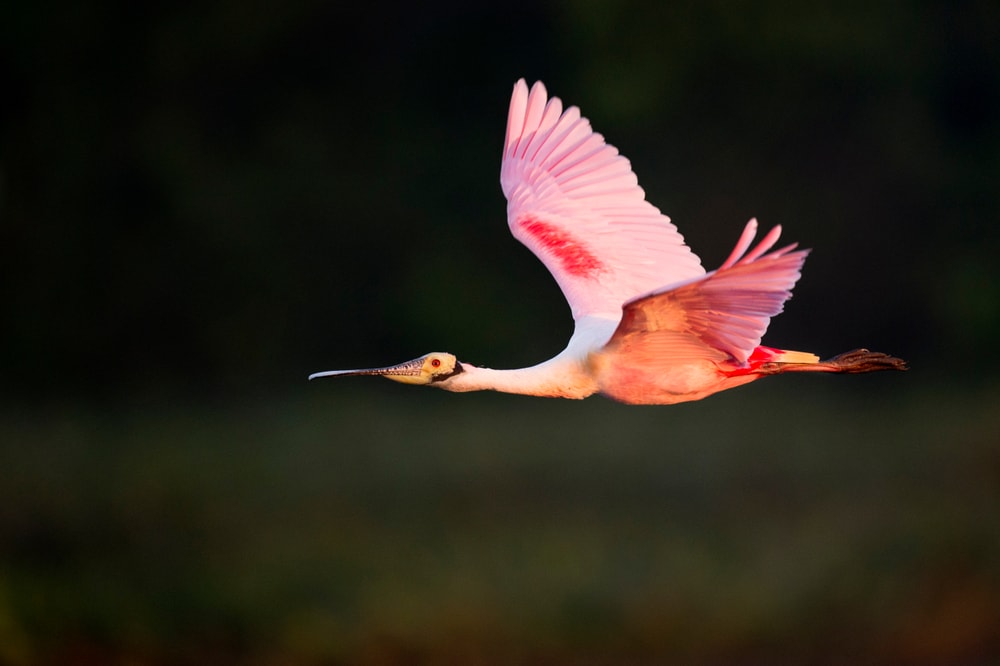
The roseate spoonbill is one of six species of spoonbills in the world, and the only spoonbill found in the Americas. Adults have a length of approximately eighty centimeters and an average weight of 1.5 kilograms (3.4lbs). The oldest recorded individual was fifteen years old.
Roseate spoonbills eat crustaceans found by foraging in shallow waters. They nest and roost in trees and shrubs along the shore of water bodies. Interestingly, roseate spoonbill chicks are born with flat bills that gradually become spoon-shaped.
3. White-faced ibis, Plegadis chihi
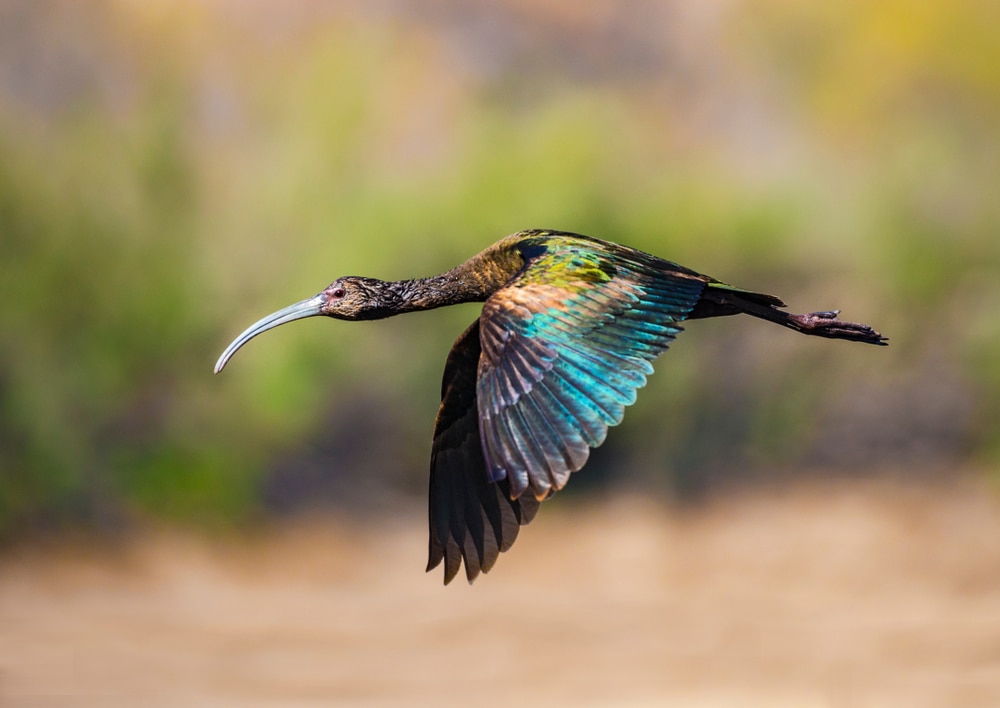
The white-faced ibis is a bit of a mystery. Little is known about populations and behavior because their colonies are difficult to get to What scientists do know is that the average adult is fifty centimeters in length and weighs approximately 500 grams (1.10 lbs), living at the edges of marshes and wet fields and eating earthworms and other invertebrates.
You May Also Like: Can Flamingos Fly? Why Flamingos Don’t Fly From Zoos
Europe
1. European spoonbill, Platalea leucorodia
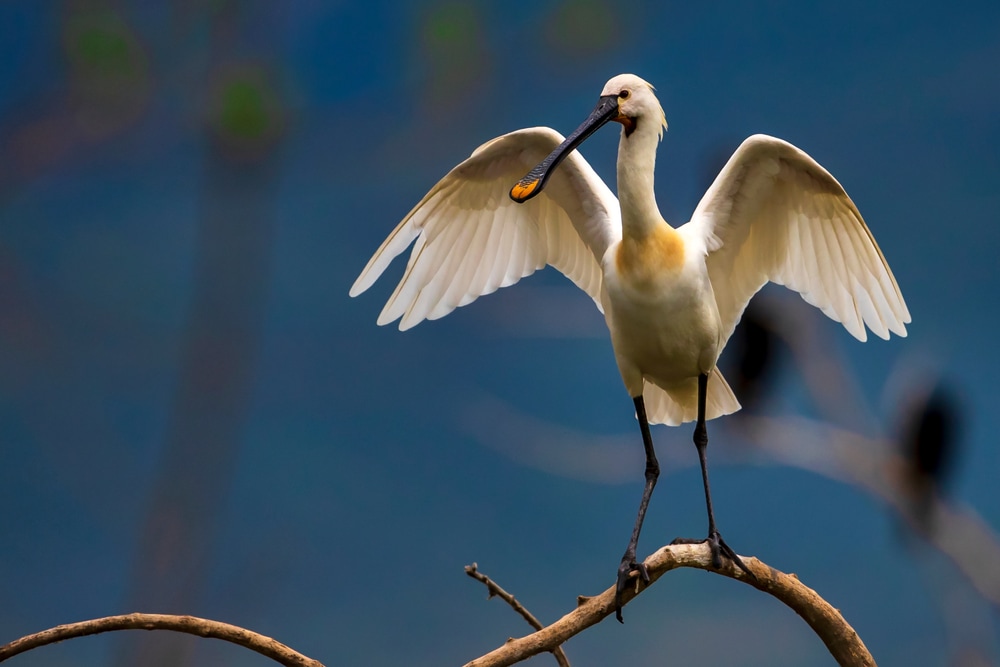
Similar to the roseate spoonbill, the European spoonbill is one of only six spoonbill species in the world and is the only one found in Europe. Average adults are sixty centimeters long and weigh one to two kilograms (3.2-6 lbs). European spoonbills live in wetlands with shallow water and eat crustaceans and small fish.
Historically the European spoonbill bred only in southern Europe and North Africa, but breeding colonies have recently been established in England.
However, populations in Europe are threatened due to habitat loss, pollution, human disturbance, and egg collection.
2. Bewick’s swan, Cygnus columbianus bewickii
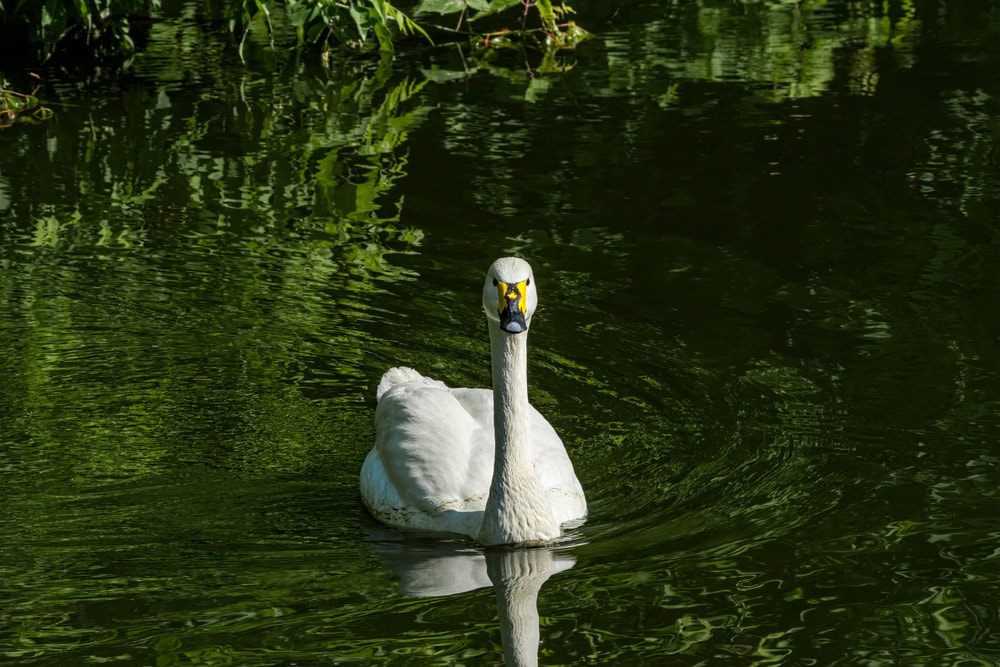
Bewick’s swan is a subspecies of the Tundra swan, differing by their winter habitat. During the summer, Bewick’s swan is found throughout northern Siberia and heads southwest to Western Europe during the winter. The smallest swan found in the Northern Hemisphere, Bewick’s swan is approximately 120 centimeters in length (47 in) and just under 6 kilograms in weight (3.6 lbs). Bewick’s swan mates for life and returns to the same breeding grounds each year.
3. Grey heron, Ardea cinerea
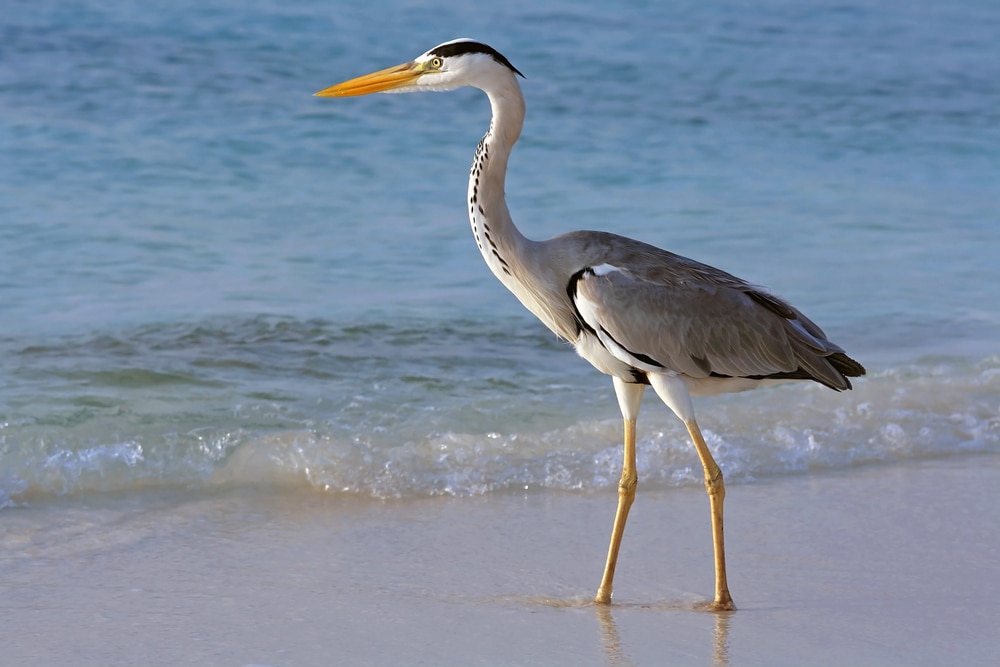
Grey herons have a wide range that includes Europe, Africa, and Asia. They adapt to most environments as long as there is enough water to provide food and other resources. Grey herons eat mostly fish, but will also eat amphibians, crustaceans, snakes, and even smaller birds.
Adult grey herons are approximately 100 centimeters tall (39 in) one to two kilograms (3.2-6 lbs) in weight, and live up to twenty years.
You may also like: Meet the 40 Species of Backyard Birds You Can See in Ohio: With Images, Facts, and More!
Australia
1. Black-Necked Stork, Ephippiorhynchus asiaticus australis
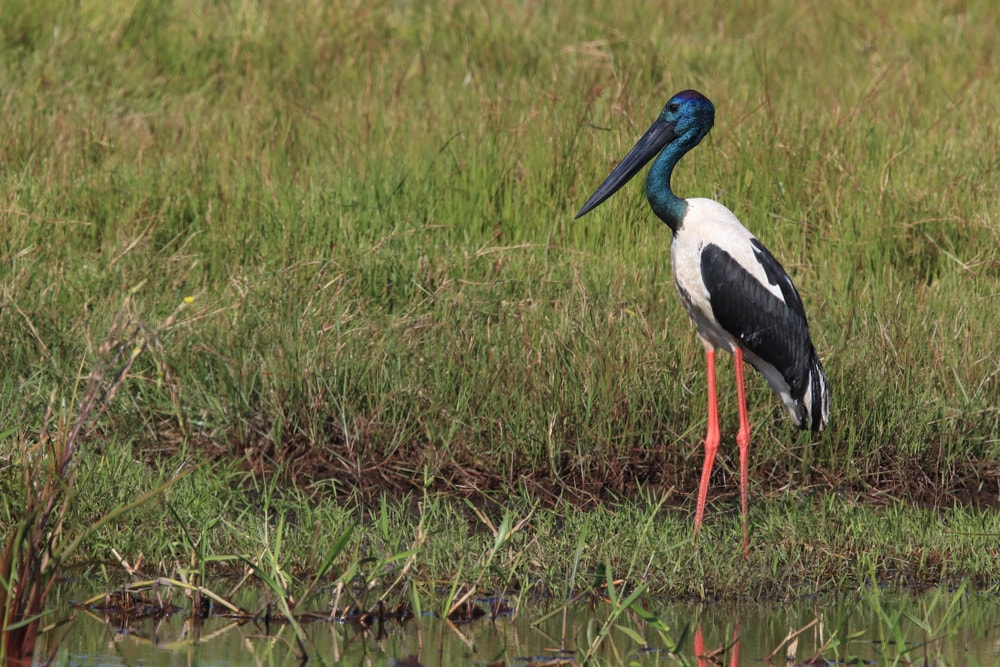
Named for its distinctive black and white plumage, the black-necked stork is the only stork species found in Australia and is found in coastal areas in northern and eastern Australia. Black-necked storks eat fish, small crustaceans, and amphibians. Adults are approximately 1 meter tall (3.3ft) and generally live in pairs or small family groups. The Australian subspecies is threatened due to habitat loss.
2. Cattle egret, Bubulcus ibis
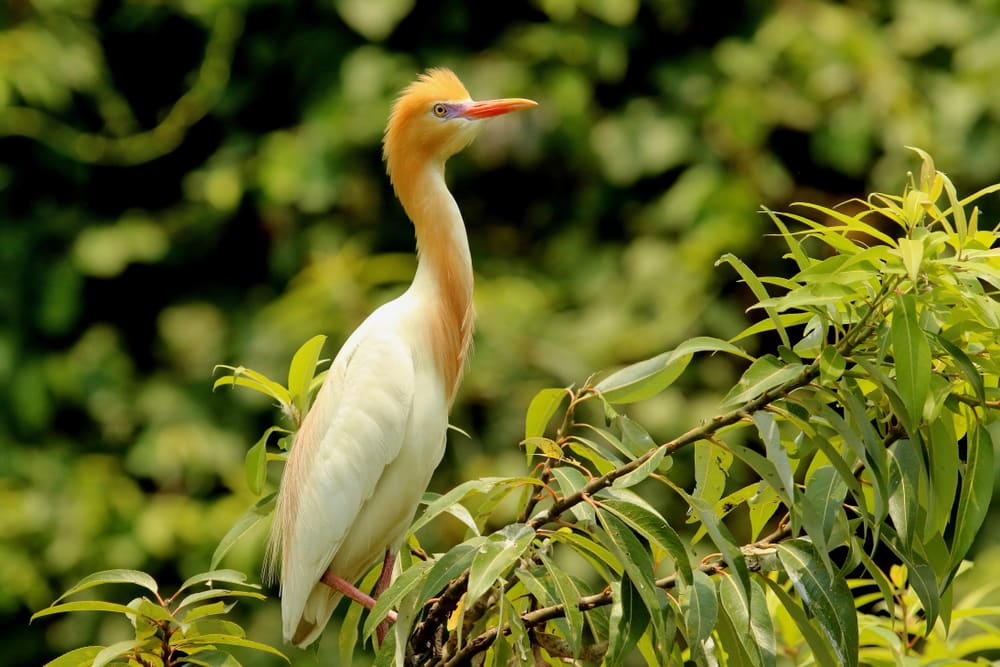
Cattle egrets are found in Australia, Africa, and North and South America. Cattle egrets were first recorded in Australia in 1948 and can now be found across eastern and northern Australia, both along water bodies and in pastures. As the name suggests, cattle egrets commonly live alongside livestock and eat insects that are disturbed by the grazing livestock. Adult cattle egrets are approximately seventy centimeters tall and weigh approximately 350 grams (0.77 lbs).
3. Black swan, Cygnus atratus
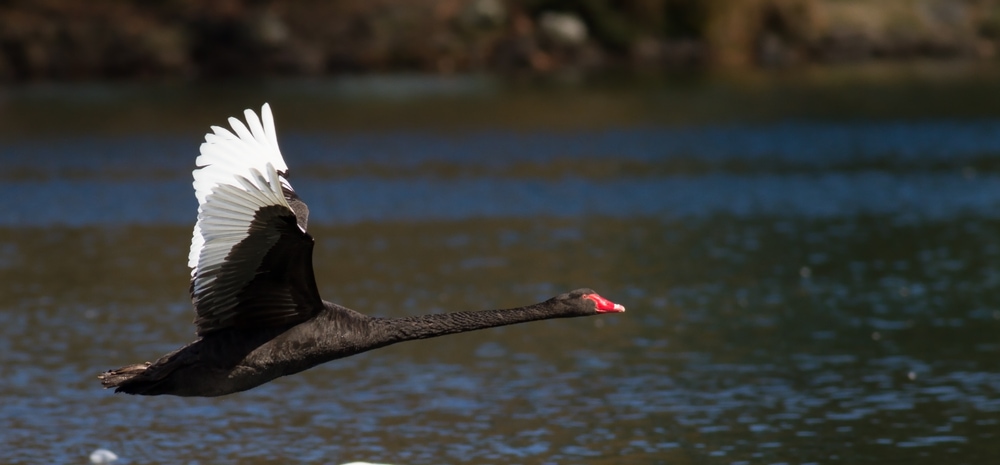
As the name suggests, black swans differ from other swans by being entirely black in color rather than the standard white. Black swans are found throughout Australia and New Zealand, with small populations in New Guinea. Adults are approximately 130 centimeters (51 in) in length and eat a vegetarian diet of algae and weeds. Black swans can be found in salt or freshwater including lakes and rivers, flying at night and resting during the day. Black swans mate for life and chicks hatch a dark gray color before molting and turning black.
You may also like: Check Out the More Than 36 Species of Birds in Colorado: With Images, Facts, and More!
Africa
1. Black-headed heron, Ardea melanocephala
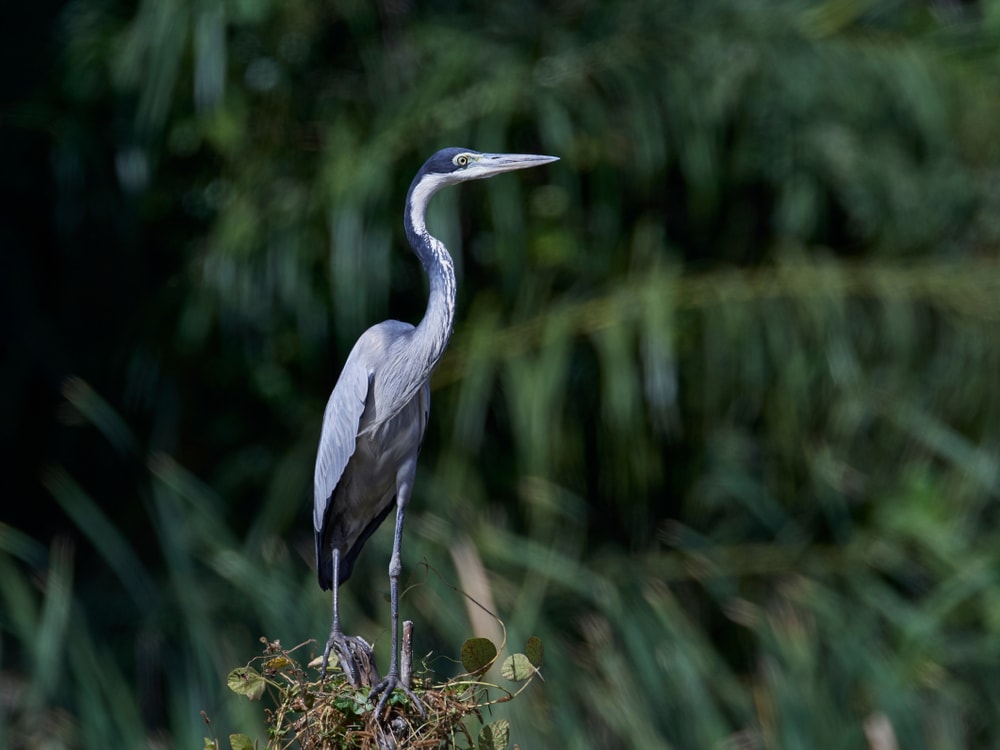
Black-headed herons are found in grasslands throughout sub-Saharan Africa. Adults are approximately 90 centimeters (35 in) in length and 1.5 kilograms (4 lb) in weight, eating insects, earthworms, spiders, fish, frogs, and small mammals. Black-headed herons nest during the rainy season. Populations are increasing to take advantage of man-made environments including dams, reservoirs, pastures, and even some urban habitats.
2. Ostrich, Struthio camelus
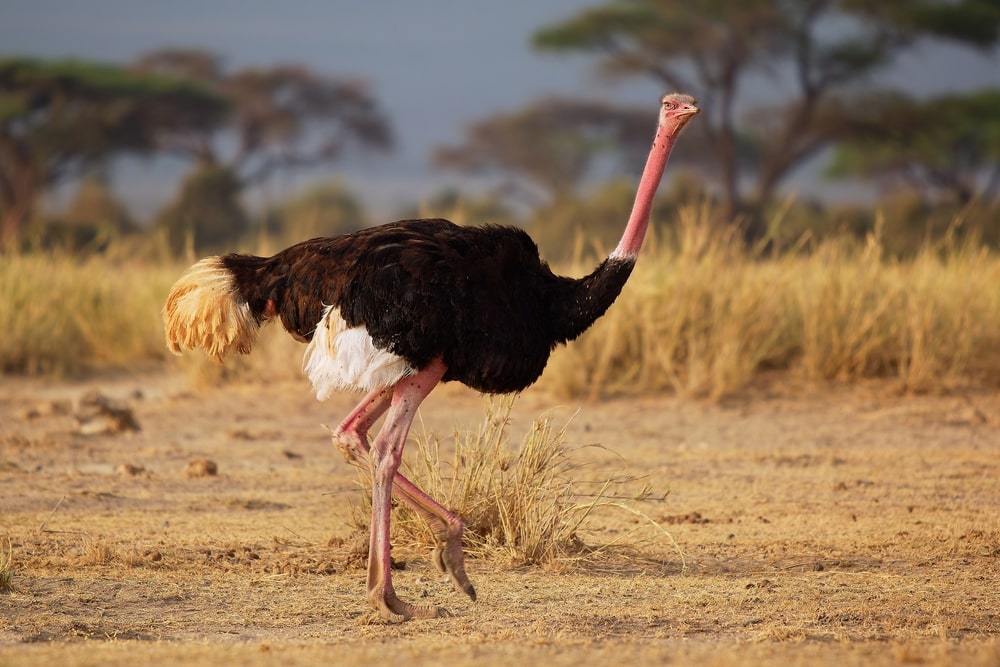
Coming in at up to 140 kilograms (300 lbs) the common ostrich is the largest bird in the world. While they can’t fly, ostriches have strong legs and sharp toes that allow them to run at an average speed of 72 kilometers an hour (44 mph) with a peak pace of up to 97 kilometers an hour (60 mph) for short periods of time.
Ostriches are 1-2 meters tall (6-9’ft) and can live up to 40 years in the wild. Ostriches are omnivorous, eating grasses, berries, seeds, insects, and small reptiles. They live in grasslands, plains, and open woodlands throughout most of Africa. Ostriches mate in groups rather than pairs, with one male and two to four females forming breeding groups that lay eggs in the same nest.
3. Kori Bustard, Ardeotis kori
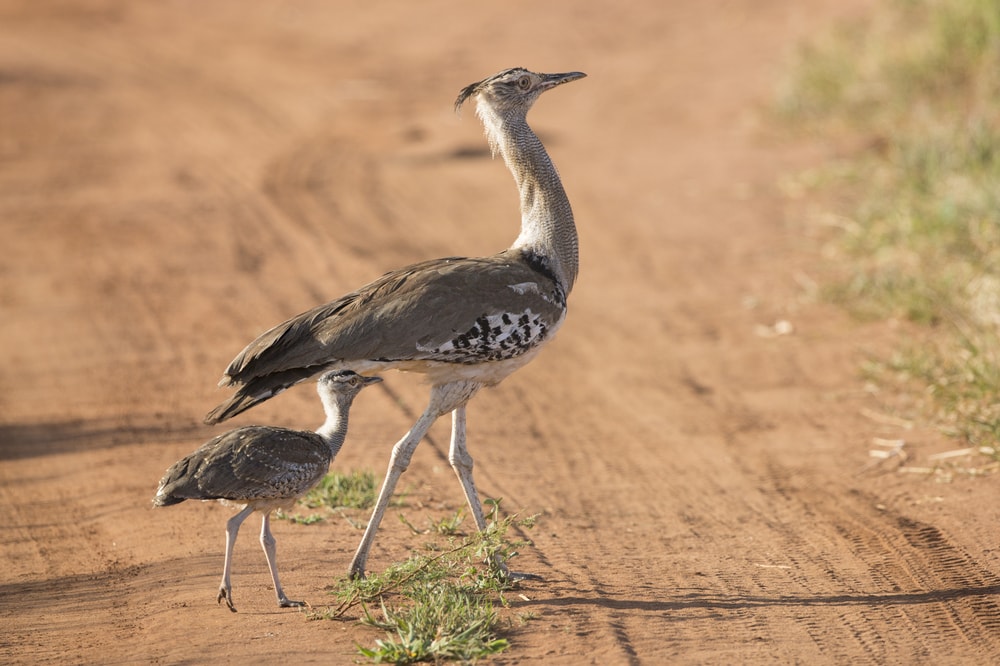
Weighing up to 19 kilograms (41 lbs), kori bustards are the world’s heaviest flying bird. One of only four species in the Ardeotis family, kori bustards can be found in grasslands and savannas in eastern and southern Africa. They are omnivores, eating insects, small mammals, seeds, and berries. Males will mate with more than one female with a unique display, inflating their esophagus to as much as four times in size.
While kori bustards can fly, they spend most of their time on the ground and reserve flight for life-threatening situations.








